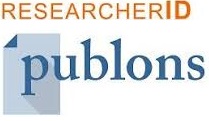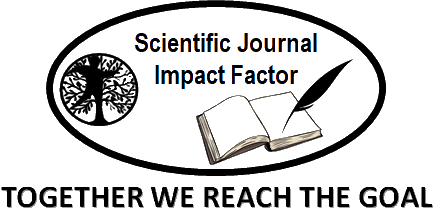Comparative Analysis of Classical and Post-Quantum Cryptographic Methods for Secure Digital Signature Implementation in the Quantum Era
Abstract
Keywords
Full Text:
PDFReferences
Alahmadi, A., Çalkavur, S., Solé, P., Khan, A. N., Raza, M., & Aggarwal, V. (2023). A New Code Based Signature Scheme for Blockchain Technology. Mathematics, 11, 1177. https://doi.org/10.3390/math11051177
Ali, Z. A., Atia, T. S., Yousuf, A. Y., & Khahdim, A. J. (2024). A comprehensive review of quantum image encryption methods: design characteristics, cryptographic properties, and AI integration. Quantum Information Processing, 23(10), 335. https://doi.org/10.1007/s11128-024-04563-y
Cooper, D. A., Apon, D. C., Dang, Q. H., Davidson, M. S., Dworkin, M. J., & Miller, C. A. (2020). Recommendation for Stateful Hash-Based Signature Schemes. https://doi.org/10.6028/NIST.SP.800-208
Durr-E-Shahwar, Imran, M., Altamimi, A. B., Khan, W., Hussain, S., & Alsaffar, M. (2024). Quantum Cryptography for Future Networks Security: A Systematic Review. IEEE Access, 12, 180048–180078. https://doi.org/10.1109/ACCESS.2024.3504815
Hattenbach, H. (2021). Quantum-resistant digital signatures schemes for low-power IoT. https://doi.org/10.48550/arXiv.2106.11710
Kuznetsov, O., Kiian, A., Babenko, V., Perevozova, I., Chepurko, I., & Oleksii, S. (2020). New Approach to the Implementation of Post-Quantum Digital Signature Scheme. 166–171. https://doi.org/10.1109/DESSERT50317.2020.9125053
Mitra, S., Jana, B., Bhattacharya, S., Pal, P., & Poray, J. (2017). Quantum cryptography: Overview, security issues and future challenges. 2017 4th International Conference on Opto-Electronics and Applied Optics (Optronix), 1–7. https://doi.org/10.1109/OPTRONIX.2017.8350006
Moskvin, V. S. (2022). Post-Quantum Digital Signatures in Transport Documents. 2022 Intelligent Technologies and Electronic Devices in Vehicle and Road Transport Complex (TIRVED), 1–5. https://doi.org/10.1109/TIRVED56496.2022.9965491
Sahu, S. K., & Mazumdar, K. (2024). State-of-the-art analysis of quantum cryptography: applications and future prospects. In Frontiers in Physics (Vol. 12). Frontiers Media SA. https://doi.org/10.3389/fphy.2024.1456491
Sargiotis, D. (2024). Data Security and Privacy: Protecting Sensitive Information. In Data Governance: A Guide (pp. 217–245). Springer Nature Switzerland. https://doi.org/10.1007/978-3-031-67268-2_6
Shajahan, R., Jain, K., & Krishnan, P. (2024). A Survey on NIST 3 rd Round Post Quantum Digital Signature Algorithms. 132–140. https://doi.org/10.1109/ICMCSI61536.2024.00027
Shim, K.-A. (2022). A Survey on Post-Quantum Public-Key Signature Schemes for Secure Vehicular Communications. Trans. Intell. Transport. Sys., 23(9), 14025–14042. https://doi.org/10.1109/TITS.2021.3131668
Templ, M., & Sariyar, M. (2022). A systematic overview on methods to protect sensitive data provided for various analyses. International Journal of Information Security, 21(6), 1233–1246. https://doi.org/10.1007/s10207-022-00607-5
Tripathi, T., Awasthi, A., Singh, S. P., & Chaturvedi, A. (2024). Post Quantum Cryptography and its Comparison with Classical Cryptography. https://arxiv.org/abs/2403.19299
Vasiliev, A. (2016). Quantum Hashing for Finite Abelian Groups. http://arxiv.org/abs/1603.02209
Xin, X., Wang, Z., He, Q., Yang, Q., & Li, F. (2019). New Public-key Quantum Signature Scheme with Quantum One-Way Function. International Journal of Theoretical Physics, 58(10), 3282–3294. https://doi.org/10.1007/s10773-019-04203-7
Xin, X., Yang, Q., & Li, F. (2020). Quantum public-key signature scheme based on asymmetric quantum encryption with trapdoor information. Quantum Information Processing, 19(8), 233. https://doi.org/10.1007/s11128-020-02736-z
DOI: http://dx.doi.org/10.52155/ijpsat.v48.2.6923
Refbacks
- There are currently no refbacks.
Copyright (c) 2025 Rayasa Puringgar Prasadha Putra

This work is licensed under a Creative Commons Attribution 4.0 International License.



















